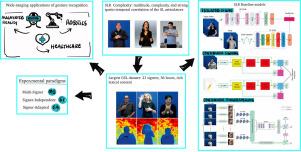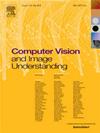识别希腊手语手势的大型语料库
IF 4.3
3区 计算机科学
Q2 COMPUTER SCIENCE, ARTIFICIAL INTELLIGENCE
引用次数: 0
摘要
视频手语识别(SLR)是手势识别领域的一个难题,需要对手部动作、面部表情和身体姿势进行解读。手势形成的复杂性、手语者之间的差异性以及视觉检测和跟踪的技术障碍使得手语识别成为一项具有挑战性的任务。同时,大规模 SLR 数据集的缺乏也加剧了这些问题,而大规模 SLR 数据集对于开发稳健的数据密集型深度学习 SLR 模型至关重要。在本文中,我们介绍了希腊手语(GSL)的多手语视频语料库,这是迄今为止最大的希腊手语数据库,是 SLR 研究的宝贵资源。该语料库由大量 RGB+D 视频组成,以多模态方式传递丰富的词汇内容,包括三个子集:(i) 孤立手势;(ii) 连续手势;(iii) 连续字母指拼单词。此外,我们还引入了一个综合实验装置,为更准确、更稳健的 SLR 解决方案铺平了道路。特别是,除了多签名者(MS)和独立签名者(SI)设置外,我们还采用了签名者适应(SA)实验范例,便于在各种情况下全面评估系统性能。此外,我们还提供了针对孤立符号、连续签名和连续指拼的三种基线 SLR 系统。这些系统利用深度学习和序列建模的前沿方法捕捉手势中固有的复杂时间动态。这些模型在三个语料子集上进行了评估,设定了最先进的识别基准。SL-ReDu GSL 语料库,包括其推荐的实验框架,可在 https://sl-redu.e-ce.uth.gr/corpus 上公开获取。本文章由计算机程序翻译,如有差异,请以英文原文为准。

A large corpus for the recognition of Greek Sign Language gestures
Sign language recognition (SLR) from videos constitutes a captivating problem in gesture recognition, requiring the interpretation of hand movements, facial expressions, and body postures. The complexity of sign formation, signing variability among signers, and the technical hurdles of visual detection and tracking render SLR a challenging task. At the same time, the scarcity of large-scale SLR datasets, which are critical for developing robust data-intensive deep-learning SLR models, exacerbates these issues. In this article, we introduce a multi-signer video corpus of Greek Sign Language (GSL), which is the largest GSL database to date, serving as a valuable resource for SLR research. This corpus comprises an extensive RGB+D video collection that conveys rich lexical content in a multi-modal fashion, encompassing three subsets: (i) isolated signs; (ii) continuous signing; and (iii) continuous alphabet fingerspelling of words. Moreover, we introduce a comprehensive experimental setup that paves the way for more accurate and robust SLR solutions. In particular, except for the multi-signer (MS) and signer-independent (SI) settings, we employ a signer-adapted (SA) experimental paradigm, facilitating a comprehensive evaluation of system performance across various scenarios. Further, we provide three baseline SLR systems for isolated signs, continuous signing, and continuous fingerspelling. These systems leverage cutting-edge methods in deep learning and sequence modeling to capture the intricate temporal dynamics inherent in sign gestures. The models are evaluated on the three corpus subsets, setting their state-of-the-art recognition benchmark. The SL-ReDu GSL corpus, including its recommended experimental frameworks, is publicly available at https://sl-redu.e-ce.uth.gr/corpus.
求助全文
通过发布文献求助,成功后即可免费获取论文全文。
去求助
来源期刊

Computer Vision and Image Understanding
工程技术-工程:电子与电气
CiteScore
7.80
自引率
4.40%
发文量
112
审稿时长
79 days
期刊介绍:
The central focus of this journal is the computer analysis of pictorial information. Computer Vision and Image Understanding publishes papers covering all aspects of image analysis from the low-level, iconic processes of early vision to the high-level, symbolic processes of recognition and interpretation. A wide range of topics in the image understanding area is covered, including papers offering insights that differ from predominant views.
Research Areas Include:
• Theory
• Early vision
• Data structures and representations
• Shape
• Range
• Motion
• Matching and recognition
• Architecture and languages
• Vision systems
 求助内容:
求助内容: 应助结果提醒方式:
应助结果提醒方式:


